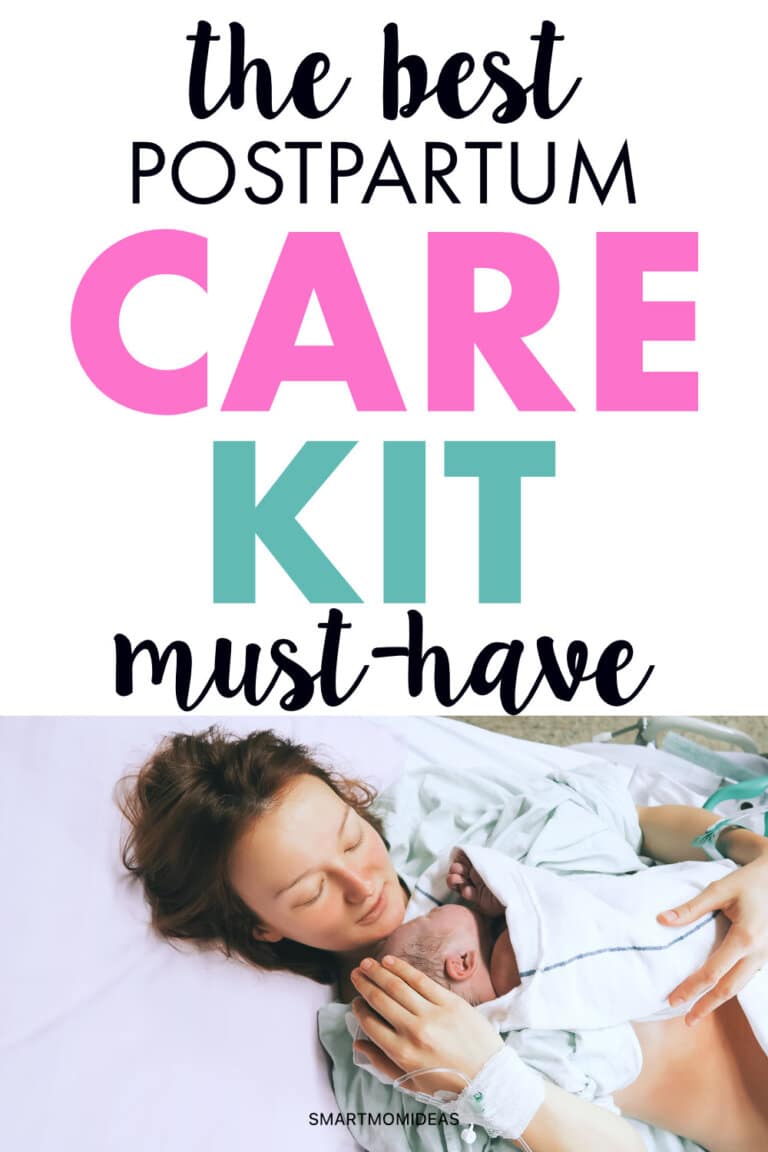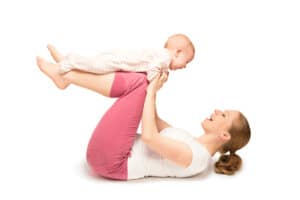Get the must-need postpartum care kit as a bran new mother!
Having a baby is an amazingly exciting time in your life – congratulations!

Now that your little one has made his or her debut in the world, it’s time to focus on your postpartum recovery and overall health.
Having a postpartum care plan is important in making sure your body heals quickly after the experience of childbirth.
To prepare for your postpartum care, you should definitely put together a postpartum care kit!
Having everything you need ready and at your disposable will make the journey through your recovery less hectic and painful.
Every woman experiences postpartum recovery just as differently as they experience birth. It’s hard to prepare for the pain and soreness you’ll feel after giving birth to your child.
So, to help you get ready for your postpartum care, I’ve put together a list of essentials that you should have in your postpartum care kit.
What Do Hospitals Give You to Take Home After Birth?
Now, if you’re pregnant, maybe you’re thinking that the hospital can supply many postpartum items, right?
We spend most of our time and energy getting ready for labor and delivery and then we forget to think about postpartum supplies (that’s why a postpartum care kit that you make before you give birth is the best thing for sure!).
Most hospitals do give:
- mesh underwear – also called postpartum briefs or mesh undies but NOT durable or long-lasting
- pads (but not a lot an NOT heavy duty)
- nursing pads (sometimes)
- diapers
- baby wipes
- newborn hat!
But, make sure to know that not all of the following items are given after every delivery.
And, finally, know that these items aren’t the best quality (except the newborn hats as many grandmothers and people make hats to donate to their local hospital) so it’s best to stock up on these items and more for your postpartum care kit.
What Do I Need for Postpartum Care?
1. Heavy-Duty Pads
It’s not uncommon for new moms to experience vaginal bleeding following the birth of their little one. This is just your uterus shedding its lining that it no longer needs now that your baby is born.
Heavy postpartum bleeding can last anywhere between 3-10 days, so it’s important that you have some heavy-duty pads on hand.
You can opt for any pad as long as it’s designed to be super-absorbent. Always Maxi Extra Heavy Overnight Pads are a good choice but you can honestly go with any cheap and giant pads you find.
Grab about 2-3 packages of these.
2. Mesh Underwear
This heavy postpartum bleeding can wreak havoc on your undies, so it’s a good idea to have some disposable mesh panties for at least the first week after your baby is born.
They are stretchy, breathable and will hold your pads in place and much better than what the hospital supplies.
Once your bleeding slows down, you can move on to large granny panties. If you do experience some leakage, you won’t feel so bad about throwing them away.
Plus, larger underwear will give you that loose, comfortable feeling as you recover.
For more recommendations, check out my top postpartum underwear pick!
3. Pain Relievers
Just because your baby is out and in the world doesn’t mean that you’re done with uterine contractions. You can expect cramping for at least 4-7 days after delivery.
Plus, if you had a vaginal delivery, it’s going to hurt down there for a bit from the pushing and stretching. Even with a c-section, there could be soreness around the incision site.
When you have both Tylenol (acetaminophen) and Advil (ibuprofen) on hand, you can rotate them to extend their pain-relieving powers – just make sure you ask your doctor how to do this properly.
4. Sitz Bath Soak
Before you leave the hospital, your doctor is going to recommend you have a sitz bath at least once a day for 15-20 minutes. These baths will help ease perineal pain and promote healing by keeping the area clean.
You can buy sitz bath soaks or simply use Epsom salts mixed with ingredients such as witch hazel, lavender oil or chamomile – or use just Epsom salts by themselves.
Sitz baths don’t require a lot of water (just enough to sit in and cover the area) but if you don’t have a bathtub, you can always grab an on-the-toilet sitz bath that sits on your toilet and allows you to soak your vaginal area.
To learn about sitz baths and how to use them, check out my guide!
5. Peri Bottle
You’ll probably be given a peri bottle at the hospital but having it in your postpartum care kit is important in your recovery.
Keeping your perineal area clean is essential in preventing infections – especially if you experienced tearing or had an episiotomy during birth.
You should rinse your perineum with warm water during and after urination to not only keep the area clean but to reduce burning as well.
Peri bottles come in some really fancy shapes and sizes, but this basic and affordable 3-pack is all you need!
6. Stool Softener
Even if your vaginal area feels okay after giving birth, you still want to avoid pushing as much as possible. This can be difficult when it’s time to have a bowel movement since your abdominal muscles have been weakened during delivery.
Stool softeners can be a lifesaver and you should start taking them as soon as your doctor gives you the okay. They will help prevent any constipation caused by medications and make doing number two less painful and strenuous.
Continue to support your digestive system by eating plenty of fiber from whole grains, fresh fruits and veggies and by drinking plenty of water and getting light exercise (such as a relaxing walk).
7. Numbing Spray
Speak to your doctor before you use any kind of local anesthetic spray for your perineal and vaginal area. If you get the go-ahead, these sprays (such as Solarcaine’s Lidocaine Spray) can help soothe and moisturize damaged skin.
Otherwise, you can stick to a natural cooling spray to relieve perineal pain. Look for products that contain benzocaine, aloe, lanolin and menthol.
The best part? These products can be used outside of your postpartum care kit for scrapes, burns, cuts and insect bites!
8. Cooling Pads
As you can tell, the name of the game when it comes to giving your lady parts some well-needed relief after childbirth is to keep the area cool.
You can buy cooling pads and cold packs that you can apply to your perineum every couple of hours to help reduce swelling and discomfort.
However, you can get a little DIY by using a Ziploc bag full of frozen peas or creating your own “padsicles” – simply spread pure (unscented) aloe vera gel onto a menstrual pad, fold up in aluminum foil and pop it in the freezer for at least an hour.
You can prepare a few ahead of time so they’re ready to go in your freezer!
9. Nursing Bra
Now that we’ve covered your vaginal and perineal recovery, it’s time to shift focus to your breasts because, as they get heavy and fed-upon, they are going to need some TLC.
Start by adding some good nursing bras to your postpartum care kit. Not only will these help you easily breastfeed your little one but they will also help support your breasts as they get larger and full of milk.
Look for cotton/Spandex blends that are soft and comfortable against sore, cracked nipples and a style that doesn’t have any clips or snaps – these cross-over nursing bras are super easy to move aside so you can nurse your baby.
10. Nipple Cream
The early days of breastfeeding may cause your nipples to become dry, cracked and quite sore so you’re going to want some sort of cream to help soothe this issue.
Many new moms go for lanolin cream for their sore nipples. This thick cream helps to keep nipples moist and promote the healing of any cracks or sores.
However, you can opt for coconut oil as well. Coconut oil is relatively cheaper and has multiple uses beyond soothing and moisturizing your irritated skin.
Plus, with coconut oil, you don’t have to worry about washing it off before nursing your little one.
11. Nursing Pads
While breastfeeding, you may experience milk leakage when your breasts release milk while you are not nursing. It can actually happen when you hear another baby crying!
Some moms take this in stride but you can buy nursing pads to help minimize the mess leakage may cause.
Nursing pads come in disposable and reusable/washable styles.
They’re great to have around to prevent milk from leaking through your bra and shirt.
12. Belly Band
Also known as a belly wrap, belly bands help keep your abdominal organs and muscles aligned until they are strong enough to do their job again.
And, for those who have had c-sections, using a postpartum belly band helps to take the pressure off your incision site and speed up the healing process.
Just speak to your doctor before using one. Belly bands are not recommended if there is an infection around your incision site or if you experienced delivery complications.
For more help on deciding the right postpartum belly band, check out this post.
13. Postpartum Recovery Tea
Getting the right vitamins and nutrients after you have your baby is key for your postpartum recovery.
You can always try a recovery tea such as Pink Stork Recovery Strawberry Passion Fruit Tea, which is made with strawberry lead, red raspberry and ginger root. It is also organic and caffeine-free.
This tea, however, is not a substitute for a healthy diet.
Talk to your doctor about any additional supplements you may require to speed up your recovery.
How Long Does It Take to Recover From Childbirth?
As I mentioned, every woman is different but there is a general guideline to postpartum recovery.
You can expect the first week to be very intense. Your body is going through so many changes to get back to normal and heal from the experience.
When you have a c-section, you can expect a full week of bed rest after having your child.
After about 6-8 weeks of recovery, most women are cleared to return to normal activities such as driving, light lifting and light exercise.
For those who experience a vaginal birth, it can take between 3-6 weeks for any bleeding and soreness to go away. If you had to have stitches, the area can take about 7-10 days to heal.
Again, everyone heals differently, but if you find yourself not able to treat or cope with the pain, do not hesitate to visit your doctor.
Take Care of Yourself, Mama!
Make sure you stock up your postpartum care kit to help speed up your recovery so you can truly enjoy the early days of motherhood!
Now it’s your turn: Was there a postpartum recovery item that you wished you had of had after your baby was born? Share with us in the comments!





Leave a Reply